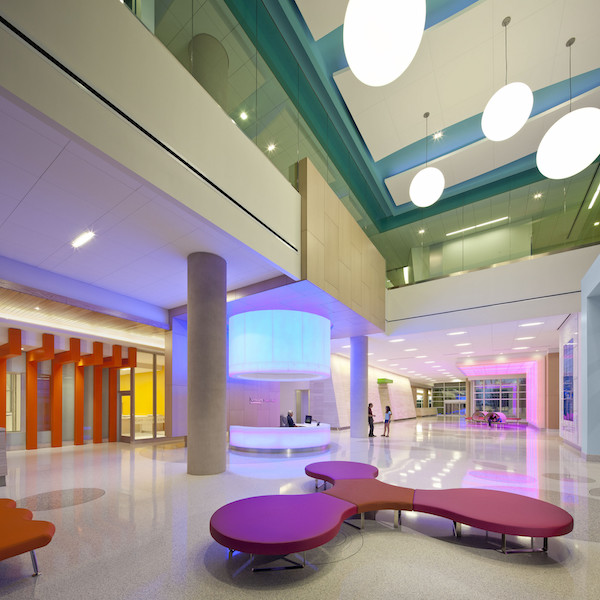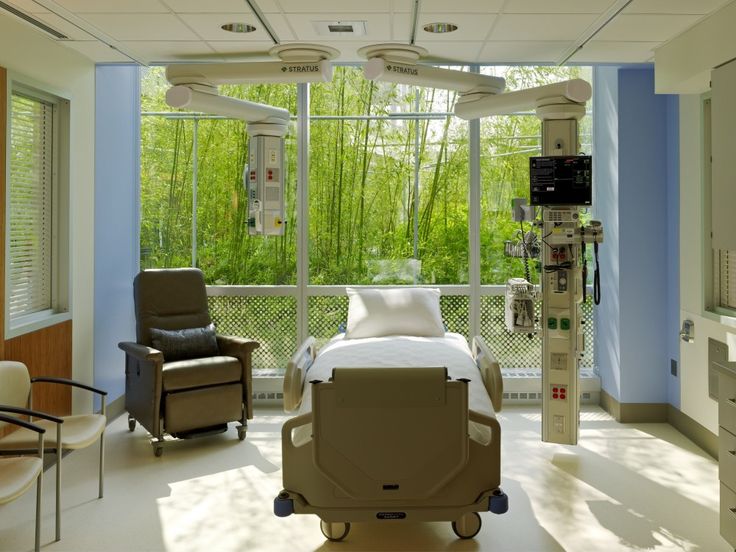Reduce stress with healthcare design
Healthcare facilities are stressful, busy places not only for patients and their families but also for staff members. Hospitals are always open, patients are always in need of care, and staff are always needed to care for them and to make the place run smoothly. Because staff members play such a vital role in hospitals, their visible stress could very well impact those of patients. It’s important, then, to consider the ways to reduce stress with healthcare design.
Spatial organization
How a space is laid out can greatly affect staff members’ efficiency, which in turn affects their stress levels. Doctors and nurses always have places to be and patients to care for, and if a hospital isn’t laid out in a way that avoids making nurses travel back and forth, the entire workday can become much more stressful. Talking to nurses and doctors and understanding their challenges can result in a more efficient layout that eliminates extra stops or double-crossing, which can reduce stress day-to-day. This lower visible stress in staff members can reduce stress levels in patients and visitors.
A recent article in Metropolis Magazine discussed a recently conducted study that found that, when administering medications, nurses often must go to five destinations before reaching their final bedside destination. “By virtue of thinking of process and configuration of the healthcare workplace,” Laurie Waggener, research and evidence based design director, told Metropolis, they can get that number down to two stops, saving staff and patients critical time.
Lighting
There’s extensive proof that a lack of natural light has harmful effects on both physical and mental health. This effect is perhaps most prominent in cases of Seasonal Affective Disorder, which almost always occurs in the darker months of winter. However, the consequences of inadequate Orlistat light play out in hospitals, too. It’s sensible, then, to include plenty of large, open windows in a hospital that allow plenty of natural light to spill in. It’s good for both caregivers and patients. Moreover, the previously discussed Metropolis article revealed that preliminary research has indicated that “if you can have a source of light in the nurse station there is more laughter and less consumption of caffeine,” which correlates with lower stress levels.
Incorporation of nature
It’s also long been known that nature has calming, healing effects, which is one of the reasons access to natural light is so important. There are other ways to incorporate nature in hospital design, though. Including plenty of large windows that look out at lush green trees and blooming gardens gives staff and patients constant access to nature. Using earthy wood materials occasionally throughout the facility also helps tie in a dose of the calming outdoors. Green and brown paints and artwork that allude to nature can also subtly bring a calming sense indoors for staff in their day-to-day work, providing another example of ways reduce stress with healthcare design.
Colors
Finally, the use of color in a hospital can greatly affect stress levels. There are many studies on the psychology of color, and these studies show that certain colors produce certain moods and emotions. Walking around and seeing red wall after red wall may not necessarily bring a sense of calm and relaxation to the room. Seeing various shades of blues and greens, however, likely will. Depending on the desired emotion, certain colors can certainly help reduce stress levels for both staff members and patients.







Sorry, the comment form is closed at this time.